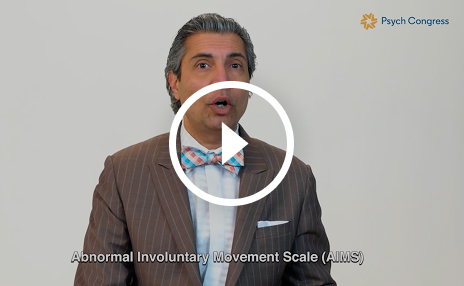This animated video visually explores the distinct mechanisms of action (MOAs) of anticholinergics and VMAT-2 inhibitors in managing tardive dyskinesia.
Supported by an educational grant from Neurocrine Biosciences, Inc.
As an April 2023 article published in The Journal of Clinical Psychiatry concluded, “Tardive dyskin
This video series offers guidance on performing the Abnormal Involuntary Movement Scale (AIMS) exam, a standardized tool for assessing tardive dyskinesia and other movement disorders.
This video showcases comparisons of patients with tardive dyskinesia (TD) before and after treatment, highlighting the visible improvements in involuntary movements.
In this instructional video, Psych Congress co-chair Rakesh Jain, MD, MPH, explains the importance of the Abnormal Involuntary Movement Scale (AIMS) exam in the diagnosis
Gain fresh insights into the multifaceted impacts of tardive dyskinesia (TD) with Psych Congress Steering Committee Member Desiree Matthews, PMHNP-BC, as she explores the physical, social, and emotional consequences faced by patients living with TD. Matthews describes key assessment strategies and the differences between VMAT2 inhibitors, offering valuable insights for health care professionals in managing this condition.
Join Psych Congress Scientific Director Craig Chepke, MD, DFAPA as he reviews how to appropriately differentiate between movement disorders.










